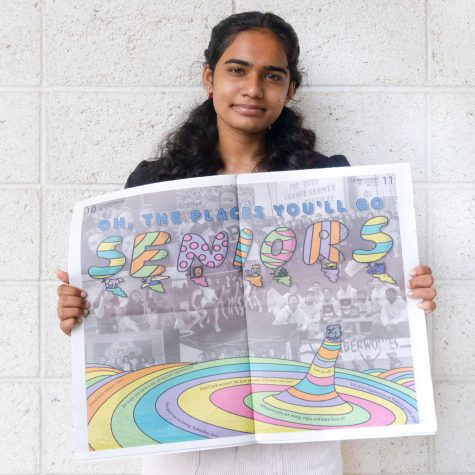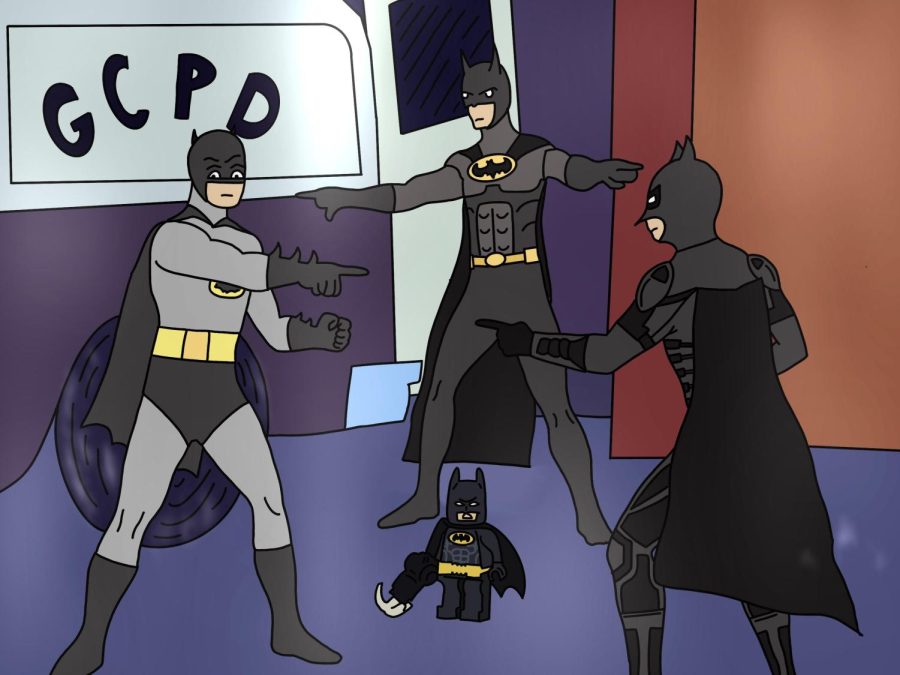The Batman Legacy: Ranking the Top Batman Films
Batman has been played by many actors since the 1940s, some of the most famous being Ben Affleck, Christian Bale, George Clooney, Michael Keaton and Robert Pattinson.
Past each delicate puff of wispy cloud, one light pierces through the dead of night — a bat symbol, etched into the sky, illuminates the dark; the Batman is coming.
Audiences have seen the infamous vigilante Batman appear in animated films, live action movies, TV shows and even in Lego form. The following review will rank major Batman films by evaluating plot, character development and cinematography.
First Place: “The LEGO Batman Movie” by Chris McKay
This movie is a satirical jab at the overtly serious Batman films, and it exceeds expectations. With its unexpected yet hilarious nature of the original Lego Movie, coupled with the somewhat intimidating yet endearing protagonist, “Lego Batman” lives up to the lofty expectations with its own distinctive and hilarious flair.
“Lego Batman” embraces the goofiness and fun that modern incarnations of Batman want to forget and cranks them up. It is a lucid dream of an adventure, so clearly self-aware and so different in message — it is impossible to dislike.
It is not just an entertaining flick for children — it also serves as commentary satire of comics desperately trying to be gritty, serious and dark, much like modern teenagers.
Second Place: “The Dark Knight” Trilogy by Christopher Nolan
Composed of “Batman Begins,” “The Dark Knight” and “The Dark Knight Rises,” this trilogy takes the audience on a journey through the ups and downs of Batman; audiences are immersed in each scene as if they were in the movie though complex plot developments and dark and gothic film elements. Characters like The Joker and Rachel play important roles in story development, segueing into unexpected plot twists and fast-paced action sequences.
Throughout the eight-hour trilogy, audiences are met with fan-favorite villains who challenge Batman in ways they haven’t seen before. In particular, “The Dark Knight” presents a unique obstacle for Batman, in which he is forced to choose between his own desires and what is best for Gotham City. The Joker specifically portrays a flawless blend of psychosis yet also a kind of playfulness that evokes discomfort in the audience.
For superhero fans and casual viewers alike, Nolan’s interpretation of such an iconic hero does not disappoint.
Third Place: “Batman: The Movie” (1966) by Leslie H. Martinson
Throughout this movie, not once does the audience lose track or feel overwhelmed, despite the break-neck speed among the myriad plot strands and narrative developments. It carries audiences along effortlessly — a testament to the skill of writer Lorenzo Semple Jr.
The cinematographic elements he incorporated were so hysterical, yet it seems completely organic to the comics. Nothing in the plot is superfluous — everything is made to work and has its place.
It is a film of a thousand ideas and action scenes: none of which are out of place nor rushed. With an extended run-time and inflated budget for the 1960s, “Batman: The Movie” wisely engrossed the audience with an expansion on everything the original comics stood for.
Fourth Place: “Batman” (1989) by Tim Burton
Burton’s interpretation of this iconic hero is a triumph — at least partially after years of developmental hell. With the focus primarily on creating a film that captured the true ideals of Batman — a creature of night who stalks criminals through the shadows of Gotham — it is safe to say that Burton accomplished this flawlessly.
By employing the gothic elements and grotesque setting that make his filmmaking magical, Burton further improves the overall character arc of Batman from a comic tale to a flushed out masterpiece. To accompany his cinematic aesthetic and flair, the top-notch performances of the Joker (Jack Nicholson) and Batman (Michael Keaton) enhance the experience.
However, the narrative development of the story lacks any organic depth, and the majority of the story thrives on clichés, landing this story to the bottom of our list.
Your donation will support the student journalists of Portola High School. Your contribution will allow us to purchase equipment and cover our annual website hosting costs.

Dheeksha Bhima Reddy is the co-Editor-in-Chief for her third and final year on the Portola Pilot. Through her newfound obsession of drinking coffee (cold...

Cara Chan is the Features Editor and Business Manager for her third year on the Portola Pilot. Though she’s feeling bittersweet about her final year,...




